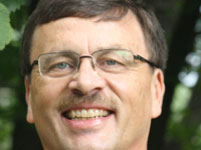 by Kevin Proescholdt
by Kevin Proescholdt
Wilderness Watch recently asked the National Park Service (NPS) to develop a new alternative in the planning for grizzly bear recovery in the North Cascades of Washington State. Our suggested proposal would both benefit grizzlies and protect designated Wilderness, something that none of the existing alternatives in the NPS’s current plan do. Wilderness Watch has requested that a natural recovery alternative be thoroughly developed and studied for grizzly restoration.
A natural recovery alternative doesn’t mean do nothing as some of its critics contend, but instead would call for real action in British Columbia and the U.S. to facilitate natural recovery. That could mean many things, such as changes in black bear hunting regulations in both countries, facilitating passage across highways, reducing road densities, guidelines for human behavior in the areas most likely used as connecting corridors for grizzly expansion, building social tolerance, and the like. In other words, it would be a cooperative plan between the U.S. and Canada for grizzly recovery. If this kind of cooperation can’t be obtained, then grizzly recovery in the U.S. portion of the North Cascades is likely to fail, regardless of the number of bears that are translocated there. And without linkages across the border with British Columbia, the long-term genetic viability of a relatively small grizzly population on the U.S. side of the border would also be at risk.
We recognize at least some of the current challenges to facilitating grizzly movement across the border from Canada, but we also believe it is imperative for the NPS to rigorously study, analyze, and disclose such an alternative. Sometimes grizzlies can confound even the experts. Twenty years ago, for example, the U.S. Fish and Wildlife Service proposed a plan (which died after the election of George W. Bush) to reintroduce 25 grizzlies into the Selway-Bitterroot Wilderness but as an “experimental, nonessential” population that would receive lesser protections under the Endangered Species Act. Most experts said there was absolutely no way that grizzlies could get into the Selway-Bitterroot on their own. But now, 20 years later, grizzlies are indeed moving in there on their own. The North Cascades ecosystem has differences with the Selway-Bitterroot regarding potential grizzly movement, of course, but the NPS has not seriously looked at the possibilities and pitfalls of a natural recovery option for grizzlies in the North Cascades.
The current plan by the NPS and the U.S. Fish and Wildlife Service to translocate grizzly bears into the North Cascades in Washington raises many concerns about the harms posed to individual bears, who will be snared or culvert-trapped or pursued by helicopters and shot with tranquilizers, removed from their familiar home territories, poked, prodded, and collared with electronic surveillance devices. The environmental analysis indicates bears would be taken “from source populations in northwestern Montana and/or south-central British Columbia” where, at least in Montana, grizzly bear populations are still struggling and suffering record high mortality rates. The heavy-handed capture and translocation methods proposed—as well as continued monitoring and handling methods—could result in death or injury of the bears, which are protected as a threatened species under the Endangered Species Act. And if that weren’t enough, the DEIS ignores the literature describing the negative effects—including severe stress responses and avoidance of important habitat—of all this helicopter traffic on wildlife, including grizzlies
And, as we’ve unfortunately seen again and again in Idaho and Washington, politically controversial predators with electronic tracking devices around their necks are regularly targeted for “removal actions.” Freedom of Information Act documents in Idaho showed that Idaho Fish and Game (and possibly the federal management agencies involved before delisting) regularly supplied Wildlife Services with GPS data from wildlife collars to locate and kill wolves, oftentimes through aerial gunning. Washington also has a long, sordid history of killing wolves at the behest of cattle ranchers. The environmental analysis here indicates “all released grizzly bears would be GPS-collared and monitored. If a bear frequents an allotment area, the FWS and WDFW would work with the USFS and livestock owners to determine the best course of action to minimize bear-livestock interactions.” We are sympathetic to the desire to move quickly if there are only a few bears left in the North Cascades, but what of the bears that are dropped there against their will? What of the struggling source populations? And, are we simply creating another island population that cannot survive without ongoing, heavy-handed intervention? Is this really good for the bears? For Wilderness? We think these are questions that deserve serious analysis and public disclosure.
The current plan is misguided in the many ways that it would violate the 1964 Wilderness Act. None of the current action alternatives in the Draft Grizzly Bear Restoration Plan/Environmental Impact Statement (DEIS) are compatible with Wilderness. The proposed recovery area of 6.1 million acres includes North Cascades National Park and 2.6 million acres of Wilderness in the Pasayten, Mt. Baker, and Stephen Mather Wildernesses. All, or almost all, of the proposed helicopter landings would apparently be in Wilderness, either in North Cascades National Park or in surrounding national forests, despite the fact that 60 percent of the project area is outside of Wilderness. The plan proposes anywhere from 50 to 400 helicopter landings and twice that many flights (though the DEIS is somewhat inconsistent on the exact numbers) to move up to 160 bears, again all or mostly all within Wilderness despite more of the project area being outside of Wilderness. The extensive use of helicopters would continue indefinitely for monitoring bear movement and numbers.
The essential irony is that agencies recognize the best place to release bears is in the exceedingly rare wildness of the North Cascades. The best grizzly habitat is synonymous with Wilderness: space to roam, isolation, denning sites, safety from human-caused mortality, and distance from human conflicts and garbage. But the agency’s proposed methods of re-establishing grizzlies diminish all these advantages.
Wilderness Watch supports the recovery of grizzly bears and other native species where suitable habitat exists. The rugged North Cascades are historic grizzly bear habitat, and there are likely a few currently living on the U.S. side of border now, with a grizzly bear photographed there in 2010.
But recovery efforts must also meet the letter and spirit of the Wilderness Act. This means restoring the area’s grizzly population without the use of motor vehicles and equipment, without endless landings of helicopters in Wilderness, without trammeling or manipulating the landscape or its wildlife. However suitable the habitat in the North Cascades is, we take issue with the methods proposed—the reintroduction plan is extremely intrusive, relies on activities prohibited by the Wilderness Act, and would come at a significant cost to Wilderness. What is good for Wilderness is good for bears, and those conditions are worth protecting.
It is precisely this type of heavy-handed manipulation of Wilderness that Wilderness Act author Howard Zahniser warned against, even when done for seemingly good reasons. In 1963, for example, the secretary of interior’s wildlife advisory board of ecologists led by Zahniser’s friend A. Starker Leopold recommended extensive manipulation of the National Parks and their wildlife (and the wilderness in the Parks). The Leopold Report called for manipulating parks and wildlife to re-create a representation of “the condition that prevailed when the area was first visited by the white man.” The report also stated, “Management may at times call for the use of the tractor, chainsaw, rifle, or flame-thrower but the signs and sounds of such activity should be hidden from visitors insofar as possible.”
Zahniser penned his classic rebuttal to this proposal. While some projects may have merit, he wrote, “it is certainly in contrast with the wilderness philosophy of protecting areas at their boundaries and trying to let natural forces operate within the wilderness untrammeled by man.” He continued, “Those who have advocated the preservation of wilderness by protecting at the boundaries the areas within which the natural community would be untrammeled by man have often been confronted with practical difficulties—the smallness of even the most extensive areas, for example. The ‘realism’ of their advocacy has been questioned.” But nonetheless, Zahniser urged us, when it came to Wilderness, to be “Guardians, Not Gardeners.” In the case of the North Cascades grizzly project, Zahniser would urge us to guard the Wildernesses of the North Cascades from manipulation, and to not manipulate (or “garden”) them for our own purposes, even for something as worthwhile as grizzly recovery.
If the Park Service adopts a translocation plan, it must be in line with the letter and spirit of the Wilderness Act. Monitoring should take place in a way that’s respectful to Wilderness and bears, including using hair snags, camera traps, scat collection, and on-the-ground sightings to know whether the bears are thriving. It’s wrong to rely on intrusive helicopter use, radio-collaring and ongoing handling and tranquilizing of the bears.
The DEIS entirely lacks a natural recovery option. The best way to meet the goal of a viable grizzly population in the North Cascades would be to allow for and boldly promote the natural recovery of grizzlies. This is a very different approach than the “no action” option in the DEIS, which is to “do nothing.” A natural recovery alternative would require working with British Columbia to protect grizzlies over a larger land base and would provide for connectivity between populations in the U.S. and Canada using protected habitat corridors. It would also include other measures to ensure that grizzlies are not killed by humans, regardless of what side of the border they are on and whether they are in national parks, Wilderness, or other public or private lands. It will take longer and require more patience than the instant gratification of capturing and releasing dozens of bears, but it would ultimately create a more durable population sharing the landscape with a human population that is more likely to respect the bears that make it back to the North Cascades on their own.
Let’s have the NPS look at this alternative that is both good for grizzlies and good for Wilderness.
------------------

